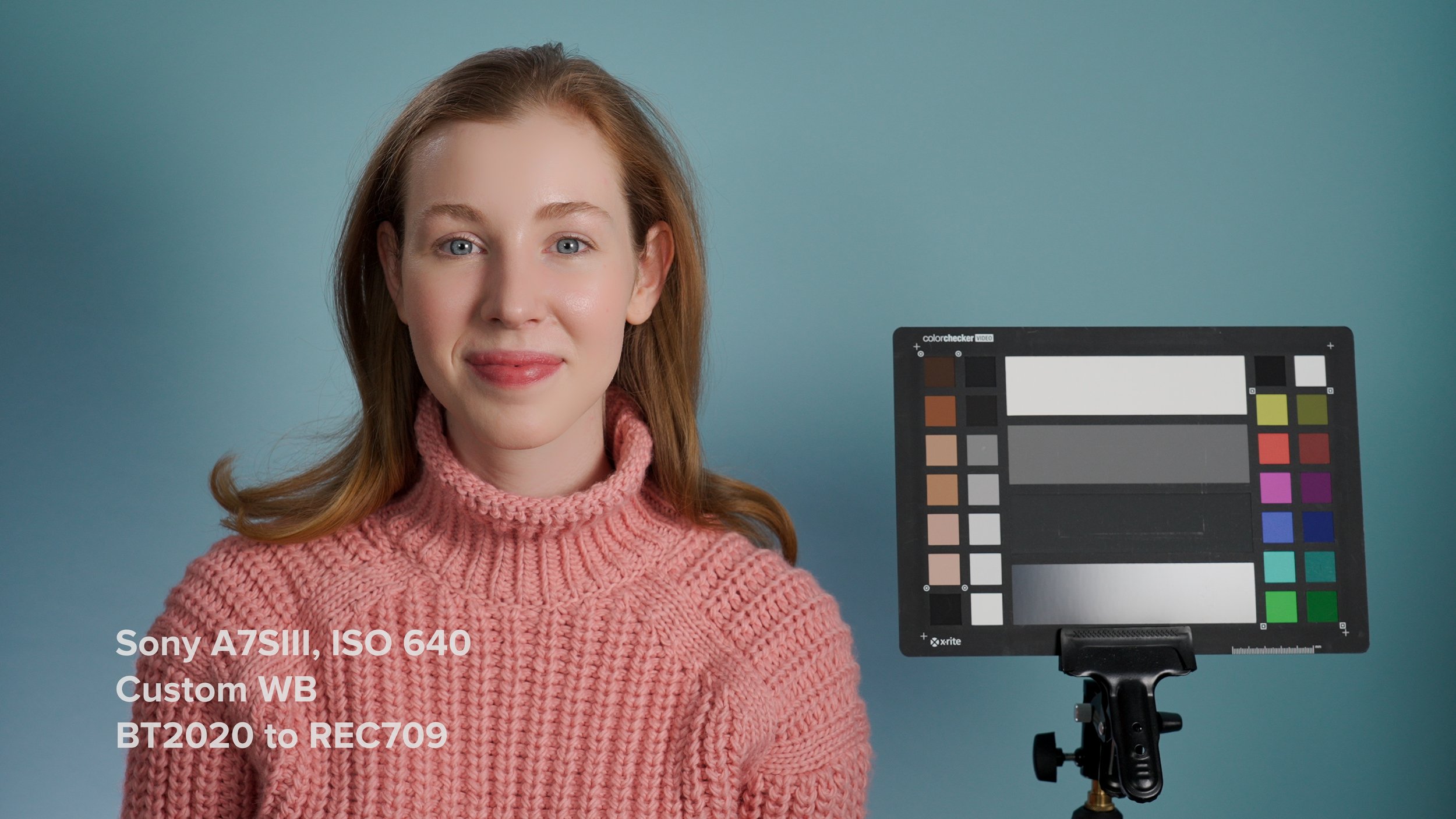Getting the best skin tones on Sony A7SIII
Sony cameras have made significant improvements in color reproduction over the years, and we were curious to see how the Sony A7S III handles skin tones and which color profile yields the best results.
We also tested REC709-based profiles, as well as LOG profiles, which require additional work in post-production. We also used different methods of normalizing the footage such as Color Space Transform OFX in Davinci Resolve, Sony-supplied LUTs, our custom-created LUTs, and ACES transform.
We carefully measured custom white balance using grey cards to ensure that there was no tint to the images while filming.
REC709 BASED PROFILES
Based on the results, we can see that No Picture Profile has a slight yellow-green tint over an image, even though the camera was carefully white-balanced beforehand.
ITU709, on the other han,d has more magenta, while Pro Color is closer to life with a better color separation without any noticeable issues.
HYBRID PROFILES
Moving next, we have S-Cinetone, BT2020, which is a part of HLG1,2,3 profiles, and Slog3.S-Gamut3.cine normalized using Sony IDT in ACES.
S-Cinetone provides pleasing color, but at the same time, it requires some additional grading to look correct. Also, since it’s not a log profile, the dynamic range is not much better than on a standard REC709 profile.
HLG1,2,3 is normalized to REC709 using Davinci Resolve’s Color Space Transform OFX. The results are pretty good with rich color saturation and separation. It does make the blue color appear more teal, which can be seen in the background, but that also can be a preference for some.
Lastly, in this row, we have Slog3.S-Gamut3.cine transformed to ACES color space using Sony’s IDT in Davinci Resolve. We think that the current IDT is not meant to be used with Sony’s mirrorless cameras, which is why the results don’t look good with the green tint over the skin tones and skewing the background color towards purple.
LOG PROFILES
In the last batch, we have the Slog3.S-Gamut3.cine file normalized using different LUTs in Davinci Resolve.
The first example is using the built-in Resolve Color Space Transform OFX, which is also available in the free version of the program. It provides a great starting point with good color accuracy, albeit leaning toward yellow in the skin tone region.
The second example is using the S709 LUT provided by Sony for Sony Venice cameras. The LUT is not intended to be used with A7S because it introduces a good amount of green in midtone areas of the image. In this particular situation, it would be much better to use Color Space OFX if working in Davinci Resolve.
The third example is using our LUT that was built specifically for A7SIII and FX3.
CONCLUSION
Based on our findings, Slog3.S-Gamut3.cine is the best profile to use on the Sony A7S III. It gives the most control over the image while also giving the best dynamic range and better color out of the box than any REC709-based profile on the camera. The tools for normalizing Slog are now widely available and easy to use, so there’s no excuse for not using them.









